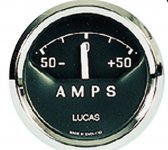trevskoda
Full Member
- Posts
- 44,456
- Likes
- 66,851
My setup costs about £10/15 bucks and works 100%, yes buy expensive b2b unit if you like, me i like to keep my pennies in the pocket.Thanks for replies - looks like I should replace the VSR with a dc to dc charger. There was no habitation battery or charging when I got the camper, so I fitted the wiring and VSR using cabling to take 60A mistakenly thinking this would be the max that would flow from the alternator without considering the starter batteries could send large additional current. The 2.5di were fitted with 70A alternators, and there is little enough power from the engine without the extra load of a more powerful alternator! The Renogy unit looks interesting in that with 2 switches on the dash I could turn it on or off and at full power charge or at half charge., so will probably go with that. As Trev suggests maybe waiting for the starter batteries to charge back before turning it on.
The current set-up has been running for 8 years and this is the second time it has blown the fuses in that time - originally I fitted 2 x 25A fuses - but probably the habitation battery has rarely got very discharged, having a solar panel topping it up, and only powering led lights, water pump, and Propex heater. But of course the solar panel is of little benefit at this time of year.
Good luck with the job.


